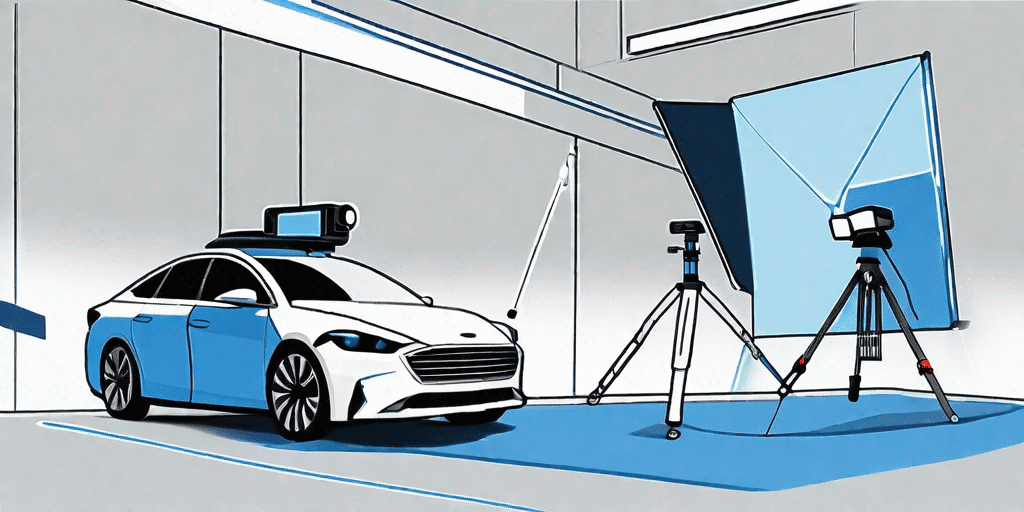ADAS (Advanced Driver Assistance Systems) have become a crucial part of modern vehicles. Among the various components that make up ADAS, the camera plays a vital role in ensuring the safety of the driver and passengers. However, in order for these cameras to function optimally, calibration is of utmost importance.
Understanding ADAS Camera Calibration
ADAS camera calibration involves aligning the camera’s field of view with the vehicle’s parameters. This calibration ensures that the camera accurately interprets the environment and provides reliable data for other ADAS features, such as lane departure warning and automatic emergency braking.
The importance of ADAS camera calibration cannot be overstated. Without proper calibration, the camera may provide inaccurate information or fail to detect potential hazards on the road. This can compromise the safety features of the vehicle and put lives at risk.
Importance of ADAS Camera Calibration
ADAS camera calibration is crucial for maintaining the effectiveness of safety features in a vehicle. By calibrating the camera, the system can accurately detect objects, assess distances, and provide timely warnings or interventions. This calibration ensures that the ADAS system functions optimally in various driving conditions.
Proper calibration also helps to reduce false alarms, improving the driver’s trust in the system. This trust is paramount for the successful integration of ADAS technologies and the overall goal of increasing road safety.
The Role of ADAS in Vehicle Safety
ADAS technologies have revolutionized vehicle safety by providing assistance to drivers in various ways. From collision avoidance systems to adaptive cruise control, ADAS plays a vital role in preventing accidents and minimizing the severity of collisions.
By incorporating cameras into the ADAS system, vehicle manufacturers have enhanced the capabilities of these safety features. However, to ensure that these cameras accurately detect potential hazards, calibration is necessary.
The Porter Calibration Process
Porter, a leader in ADAS camera calibration, utilizes a comprehensive process to ensure accurate and reliable calibration.
Initial Steps in Porter Calibration
Porter begins the calibration process by assessing the camera’s position and alignment. This involves verifying that the camera’s mounting and physical position meet the manufacturer’s specifications. Additionally, any necessary adjustments are made to align the camera with the vehicle’s parameters.
Once the initial physical assessment is complete, Porter moves on to the software calibration process.
Calibration Techniques Used by Porter
Porter employs advanced calibration techniques to ensure the camera accurately recognizes objects and provides precise data. These techniques include pattern recognition, geometric modeling, and image analysis.
Pattern recognition involves identifying and analyzing specific patterns within the camera’s field of view. This allows the camera to accurately determine the position and distance of objects, ensuring reliable ADAS functionality.
Challenges in ADAS Camera Calibration
While ADAS camera calibration is crucial, it can pose various challenges for both vehicle manufacturers and service technicians.
Common Issues in Calibration
One common issue in ADAS camera calibration is the presence of dirt or debris on the lens. Even a small obstruction can significantly affect the camera’s accuracy, leading to potential safety risks. Regular cleaning and maintenance of the lens are essential to prevent such issues.
Another challenge is the calibration of multiple cameras in vehicles equipped with advanced ADAS systems. Each camera must be individually calibrated and aligned, making the calibration process more complex and time-consuming.
Overcoming Calibration Difficulties
To overcome these challenges, manufacturers and service technicians must stay updated with the latest calibration procedures and equipment. Regular training and education are necessary to ensure competent calibration of ADAS cameras.
Collaboration between automakers, service technicians, and calibration equipment providers is also crucial. By working together, they can develop standardized calibration procedures and address the unique challenges posed by different vehicle models and ADAS systems.
Maintaining Your ADAS Camera Post-Calibration
Once the ADAS camera calibration is complete, it is essential to regularly check and maintain the camera to ensure continued accuracy and reliability.
Regular Checks and Maintenance
Periodic visual inspections of the camera and its mounting are necessary to ensure that everything remains in proper alignment. Additionally, cleaning the lens and keeping it free from dirt and debris is essential for optimal performance.
It is also important to follow the manufacturer’s guidelines regarding firmware updates and system recalibration. Regular maintenance and updates will help ensure that the ADAS camera functions properly and provides accurate information to the driver.
Signs Your ADAS Camera May Need Recalibration
While regular maintenance is crucial, certain signs may indicate that an ADAS camera requires recalibration. These signs include frequent false alarms, inconsistent performance, and error messages related to the camera system.
- If you notice any of these indicators, it is recommended to have the camera recalibrated by a trained professional to restore optimal functionality.
- Regular recalibration is essential, especially after any repairs or modifications to the camera or vehicle structure. This helps to ensure that the camera remains accurately aligned with the vehicle’s parameters.
- By staying vigilant and proactive in maintaining ADAS camera calibration, drivers can maximize the safety benefits offered by these advanced technologies.
Future of ADAS Camera Calibration
The field of ADAS camera calibration is constantly evolving, with technological advancements shaping the future of this critical process.
Technological Advancements in Calibration
Manufacturers and researchers are continually developing new calibration methods that offer greater accuracy and efficiency. This includes the use of machine learning algorithms, which can adapt to changing environmental conditions and improve the camera’s performance over time.
Additionally, advancements in sensor technology and artificial intelligence are expected to further enhance the capabilities of ADAS cameras. These technologies may enable cameras to detect more complex objects, predict potential hazards, and assist in the navigation of autonomous vehicles.
The Impact of Autonomous Vehicles on Calibration
The rise of autonomous vehicles presents new challenges and opportunities for ADAS camera calibration. As vehicles become more autonomous, the reliance on accurate ADAS data increases. Calibration will play a critical role in ensuring the safe and seamless integration of autonomous driving technologies.
With the advancement of autonomous vehicles, the need for calibration becomes even more significant, as the cameras will need to accurately interpret complex traffic scenarios and make real-time decisions accordingly.
In conclusion, ADAS camera calibration is a crucial aspect of maintaining vehicle safety and ensuring the accuracy of ADAS features. Porter, with its comprehensive calibration process and advanced techniques, plays a vital role in calibrating ADAS cameras and ensuring optimal functionality. Regular maintenance and vigilance in post-calibration checks are necessary for long-term reliability. As technology continues to evolve, the future of ADAS camera calibration holds exciting possibilities that will further enhance road safety and the integration of autonomous vehicles.



